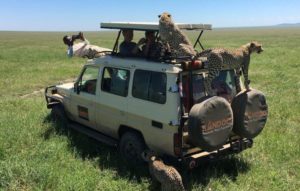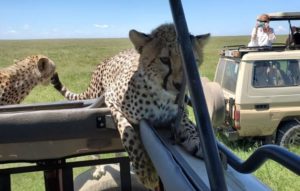10 Things We Wish We Knew Before Climbing Kilimanjaro

Climbing Kilimanjaro was a life changing experience for us, but when we ultimately decided to travel to Kilimanjaro, we didn’t have a ton of preparation time. This meant reading lots of blog posts and articles, watching hours of hiking videos, reading reviews on gear, etc. However, there are a few things we learned while actually being there. Here are 10 things we wish we had known before climbing Kilimanjaro:
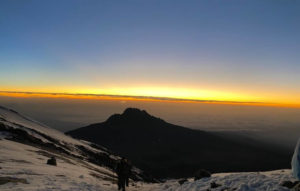
1. The climb itself isn’t as difficult or daunting as one might assume!
Kilimanjaro is one of the Seven Summits and the tallest free standing mountain in the world. The other six summits are very technical and require lots of training or preparation, but while Kilimanjaro definitely requires lots of physical strength and endurance, it’s also attainable for those ranging from 12 – 70 years old. That being said, a few months of training might just prepare you to climb the highest summit in Africa!
2. Be prepared for the weather!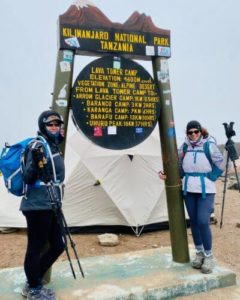
Expect to be cold and wet during your trip! Kilimanjaro may be located on the Equator (and even though it’s in Africa and we all expect it to be hot), but you’re climbing almost 20,000 feet, so it’s going to be somewhat cold no matter what. Make sure you pack well for this weather, but also be prepared to potentially rely on those around you for helpful information or equipment. For example, make sure you make use of the tarps brought up the mountain to keep your bags dry. I also was fortunate to borrow a poncho, as my rain jacket ended up not being 100% water proof. The best times to climb Kilimanjaro are January through March, and June through October.
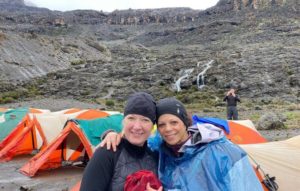 3. That being said, pack accordingly:
3. That being said, pack accordingly:
You want to make sure you pack the correct gear based on the weather, but it’s also crucial to remember that you don’t have electricity in the camp, and should pack for those situations. You’re going to want to bring a headlamp and extra batteries just in case for when there is minimal light. You might be camping or staying in huts, but either way where you eat and go to the bathroom is a short walk from where you sleep. Making sure you have a headlamp is making sure you can see the path to the bathroom in the middle of the night!
4. Prevent AMS: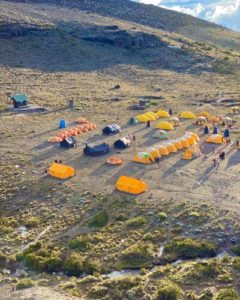
Altitude sickness occurs when the body has difficulty adjusting to lower levels of oxygen in a higher altitude environment. It’s symptoms include nausea, fatigue, difficulty sleeping/sleepiness, headache, shortness of breath/rapid breathing, and the inability to exercise. There are a few ways to prevent altitude sickness, for example there is Diamox. Diamox is a medication for AMS and can be very helpful when taking it a few days before your climb, during the climb, and until you’re off the mountain. It can help prevent a lot of the symptoms that come with altitude sickness especially once your group goes above 10,000 feet.
5. Pace yourself and listen to your body!
Keep in mind, depending on which route you’re taking you’re going to be climbing thousands of miles, so it’s incredibly important to pace yourself. While climbing you’ll often hear, “Pole-Pole” (Puh-o-leh), which means, “slowly, slowly” in Swahili. This is important in preventing AMS (altitude sickness/acute mountain sickness) because the slower you go, the more oxygen you can take in in order to acclimatize better. You also want to make sure you drink lots of water.
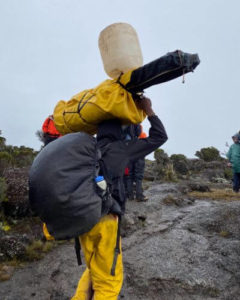 6. Keep tipping in mind!
6. Keep tipping in mind!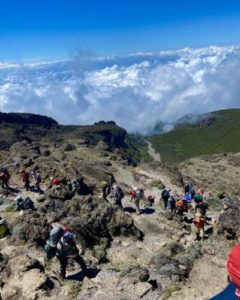
When you hike Kilimanjaro, the crew that takes you up normally includes a head guide, an assistant guide, chef, and a group of porter’s depending on how many hikers are in your group. These people heavily influence your experience climbing Kilimanjaro as they help with what you’re eating, when you’re sleeping, how much you’re climbing each day, etc. So, how much should you be tipping? Typically, around 15 or 20 for the head guide, 10 or 15 for the assistant and chef, and 5 or 10 for each porter. NOTE: this is for each day, so it should be a total of around $100 per night on the mountain (per group, not per person). After your climb, there is a tipping ceremony where local songs and dances are performed, but you’re given envelopes to tip your team. They also appreciate any gear you want to donate as well (We donated gaiters, warm gloves, and hiking shoes). Remember that these tips directly help your teams families and communities!
7. Consider the different routes: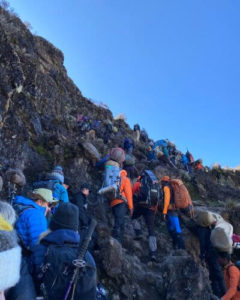
Out of the seven routes up Kilimanjaro, the most popular is the Marangu route (also known as the “Coca-Cola Route”/ the “Whiskey Route”) which is the only one with huts instead of tents and lets you climb in the shortest amount of days. It’s crucial to consider different factors that are important to you that these different routes may or may not have. For example, while the Marangu route allows you to finish in the shortest period of time, it is argued that other routes might offer more scenic views. The Marangu route, being the only one with mountain huts, might not be for you if you’d rather sleep in tents. Keeping that small example in mind, you should consider all the different routes in finding what works best for you.
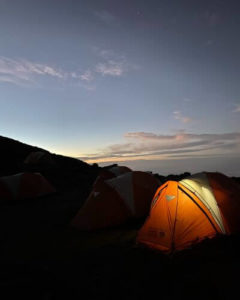 8. Keep in mind the bathing/bathroom situation with every route:
8. Keep in mind the bathing/bathroom situation with every route:
On the Marangu route, you’ll be staying in huts, where as with the other route you’ll be staying in tents. Regardless of the route, you’re greeted by one of the porters each morning with a bucket of warm water and a towel to wash yourself. This gesture is incredibly appreciated, however definitely keep in mind your level of comfort and where you might prefer to do that. The warm water can be very comforting especially in those cold mornings — another reason to tip your crew!! The bathroom situation also varies from squat toilets to porta potties, it’s just another factor to keep in mind when choosing!
9. Learn and speak some Swahili!
Learning even just a few words or phrases in Swalili can mean a lot to those you’ll meet during your trek. Taking the time to learn a few basics can go a long way in establishing genuine relationships with those you’ll be climbing with. A few helpful words or phrases, for example, would be: Jambo (hello), Mambo (How are you?), Rafiki (Friend), Pole-Pole (slowly, slowly), Asante Sana (thank you), and Hakuna Matata (no worries).
10. Summit Day is challenging, but 100% worth it!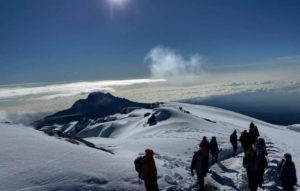
Some interesting characteristics that come with climbing Kilimanjaro are that the terrain changes quite a bit, and you go through five different climatic zones. The five different zones are Savannah/Jungle, Alpine Forest, Heather/Moorland, Highland dessert, and Arctic Tundra. The climb is overall scenic and beautiful, but once you reach 15,000 feet near the Highland Desert is where the climb becomes a little more strenuous. This has to do with many factors, for example the air being thinner and colder, or the steepness of the terrain. On the last day, your team will wake up around midnight in preparation for sunrise at Stella Point. It’s definitely crucial to remember to pace yourself and breathe on this day!
A good idea would also be to do a safari after finishing because it helps relax your muscles after such a grueling week!
